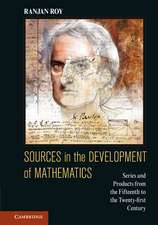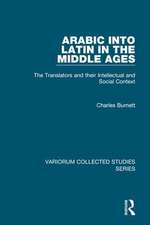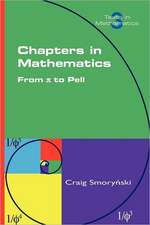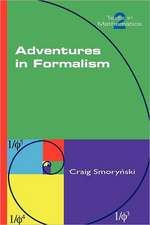Numerals and Arithmetic in the Middle Ages: Variorum Collected Studies
Autor Charles Burnetten Limba Engleză Hardback – 28 dec 2010
Din seria Variorum Collected Studies
-
 Preț: 313.38 lei
Preț: 313.38 lei -
 Preț: 311.41 lei
Preț: 311.41 lei -
 Preț: 299.55 lei
Preț: 299.55 lei -
 Preț: 325.68 lei
Preț: 325.68 lei -
 Preț: 406.12 lei
Preț: 406.12 lei -
 Preț: 311.18 lei
Preț: 311.18 lei -
 Preț: 325.31 lei
Preț: 325.31 lei -
 Preț: 396.01 lei
Preț: 396.01 lei - 9%
 Preț: 1039.89 lei
Preț: 1039.89 lei -
 Preț: 266.20 lei
Preț: 266.20 lei -
 Preț: 343.34 lei
Preț: 343.34 lei - 9%
 Preț: 938.10 lei
Preț: 938.10 lei -
 Preț: 351.48 lei
Preț: 351.48 lei - 9%
 Preț: 938.86 lei
Preț: 938.86 lei -
 Preț: 335.37 lei
Preț: 335.37 lei - 9%
 Preț: 937.14 lei
Preț: 937.14 lei -
 Preț: 351.42 lei
Preț: 351.42 lei -
 Preț: 320.00 lei
Preț: 320.00 lei - 38%
 Preț: 766.84 lei
Preț: 766.84 lei - 23%
 Preț: 315.48 lei
Preț: 315.48 lei - 36%
 Preț: 740.06 lei
Preț: 740.06 lei - 34%
 Preț: 764.20 lei
Preț: 764.20 lei - 39%
 Preț: 684.75 lei
Preț: 684.75 lei - 29%
 Preț: 247.40 lei
Preț: 247.40 lei - 37%
 Preț: 488.89 lei
Preț: 488.89 lei - 38%
 Preț: 766.91 lei
Preț: 766.91 lei - 34%
 Preț: 769.51 lei
Preț: 769.51 lei - 38%
 Preț: 769.85 lei
Preț: 769.85 lei - 36%
 Preț: 823.43 lei
Preț: 823.43 lei - 25%
 Preț: 225.28 lei
Preț: 225.28 lei - 25%
 Preț: 225.54 lei
Preț: 225.54 lei - 34%
 Preț: 767.07 lei
Preț: 767.07 lei - 34%
 Preț: 764.20 lei
Preț: 764.20 lei - 34%
 Preț: 736.38 lei
Preț: 736.38 lei - 34%
 Preț: 738.43 lei
Preț: 738.43 lei - 25%
 Preț: 226.52 lei
Preț: 226.52 lei - 33%
 Preț: 491.66 lei
Preț: 491.66 lei - 34%
 Preț: 485.78 lei
Preț: 485.78 lei - 34%
 Preț: 485.78 lei
Preț: 485.78 lei - 38%
 Preț: 766.34 lei
Preț: 766.34 lei - 36%
 Preț: 739.17 lei
Preț: 739.17 lei - 31%
 Preț: 473.94 lei
Preț: 473.94 lei - 18%
 Preț: 843.63 lei
Preț: 843.63 lei - 38%
 Preț: 774.91 lei
Preț: 774.91 lei - 38%
 Preț: 769.92 lei
Preț: 769.92 lei - 34%
 Preț: 764.20 lei
Preț: 764.20 lei - 50%
 Preț: 488.81 lei
Preț: 488.81 lei - 36%
 Preț: 488.49 lei
Preț: 488.49 lei - 34%
 Preț: 769.10 lei
Preț: 769.10 lei - 38%
 Preț: 766.99 lei
Preț: 766.99 lei
Preț: 826.36 lei
Preț vechi: 1285.57 lei
-36% Nou
Puncte Express: 1240
Preț estimativ în valută:
158.15€ • 164.49$ • 130.56£
158.15€ • 164.49$ • 130.56£
Carte tipărită la comandă
Livrare economică 15-29 aprilie
Preluare comenzi: 021 569.72.76
Specificații
ISBN-13: 9781409403685
ISBN-10: 1409403688
Pagini: 382
Dimensiuni: 150 x 224 x 31 mm
Greutate: 0.81 kg
Ediția:1
Editura: Taylor & Francis
Colecția Routledge
Seria Variorum Collected Studies
Locul publicării:Oxford, United Kingdom
ISBN-10: 1409403688
Pagini: 382
Dimensiuni: 150 x 224 x 31 mm
Greutate: 0.81 kg
Ediția:1
Editura: Taylor & Francis
Colecția Routledge
Seria Variorum Collected Studies
Locul publicării:Oxford, United Kingdom
Cuprins
Contents: Preface; The abacus at Echternach in ca. 1000 A.D; Abbon de Fleury, abaci doctor; Algorismi vel helcep decentior est diligentia: the arithmetic of Adelard of Bath and his circle;Ten or forty? A confusing numerical symbol in the Middle Ages; Indian numerals in the Mediterranean basin in the 12th century, with special reference to the 'Eastern forms'; The use of Arabic numerals among the three language cultures of Norman Sicily; Why we read Arabic numerals backwards; The Toledan Regule (Liber Alchorismi, part II): a 12th-century arithmetical miscellany, (with Ji-Wei Zhao and Kurt Lampe); Learning Indian arithmetic in the early 13th century; Latin alphanumerical notation and annotation in Italian in the 12th century: MS London, British Library, Harley 5402; Fibonacci's 'method of the Indians'; Addenda and corrigenda; Indexes.
Notă biografică
Charles Burnett is Professor of the History of Islamic Influences in Europe at the Warburg Institute, University of London, UK
Recenzii
'The research represented by these papers is meticulous and insightful; the book should be a first point of contact for any scholar interested in the introduction of Hindu-Arabic numerals to medieval Europe. It does not provide a comprehensive narrative, but that is not the point of a Variorum volume. Rather, it gathers the scholarship together, making it more accessible than it would have been otherwise. That is a contribution for which we should be grateful.' Mathematical Reviews '... this collection of articles is immensely rich in insights... The book can be recommended to anybody working on matters which it deals with...' Aestimatio '... a wealth of information, enriched with bibliography, diagrams, a huge number of photographs of manuscript folia and relevant footnotes, as well as useful indexes on names, manuscripts and mathematical terms. The work bears witness to Burnett's mastery of manuscripts, the Latin Language and palaeography, and of the historical scientific medieval context... an impressive and exhaustive treatment of the subject from many different perspectives, which makes this volume a rigorous and invaluable instrument for scholars dealing with medieval scientific manuscripts.' Suhayl
Descriere
This third volume of studies by Charles Burnett brings together articles on the different numeral forms used in the Middle Ages. Some study the introduction of Hindu-Arabic numerals into Western Europe, documenting, in more detail than anywhere else, the different forms in which they are found, before they acquired the standard shapes with which we are familiar today. Others deal with experiments with other forms of numeration within Latin script: e.g., using the first nine Roman numerals as symbols with place value, abbreviating the Roman numerals, and using the Latin letters as numerals.












